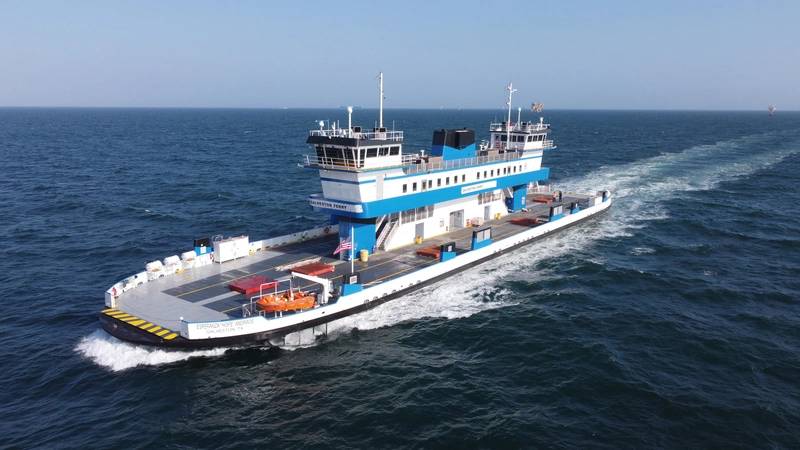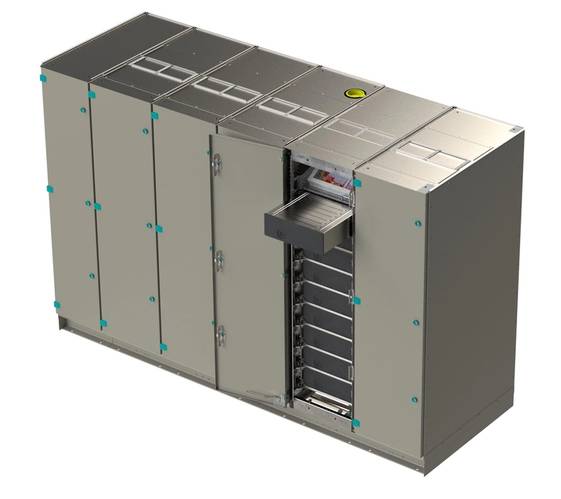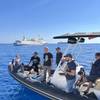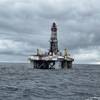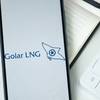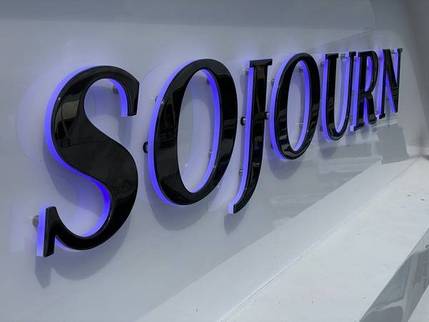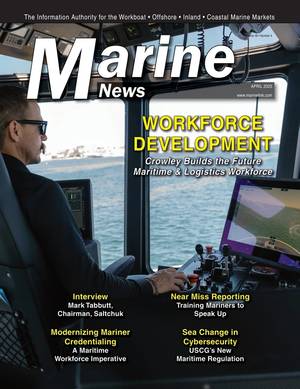Ferry Propulsion & The Total Package ... Sustainability, Safety & Siemens Energy
The ocean sector finds itself in a critical moment, especially as the demand to decarbonize grows. Though long-haul is still the biggest emitter in the maritime industry, the need to decarbonize smaller commercial and coastal vessels, including cruise ships, passenger ferries, platform supply vessels (PSVs), offshore service vessels (OSVs), and research ships, is on the rise. Particularly, passenger ferries are pushing into uncharted waters, increasingly being scrutinized by municipal, state, and federal regulators for their environmental impact. Siemens Energy, a global pioneer of electrification and propulsion technologies, is now a significant force helping ferry operators tackle these issues head-on.
Combining the strengths of Siemens Energy as a systems integrator and a portfolio of innovative technologies will change how passenger ferries work. MarineNews recently sat down with Ed Schwarz, the head of the New Marine Unit Sales for the U.S. and Canada at Siemens Energy.
Schwarz holds a BS in Marine Engineering and Shipyard Management from the United States Merchant Marine Academy. His diverse background includes time spent as a shipboard Marine Engineer and has since seen him transition into leadership roles. In his most recent role as the Vice President of Sales at ABB Marine Systems' North and South America sales division, Ed was recognized for his significant technical contributions to the marine industry.
This month, our conversation turned to the demand for decarbonization in the passenger ferries sector, and where Siemens Energy is working to help operators integrate new technology for a greener future.
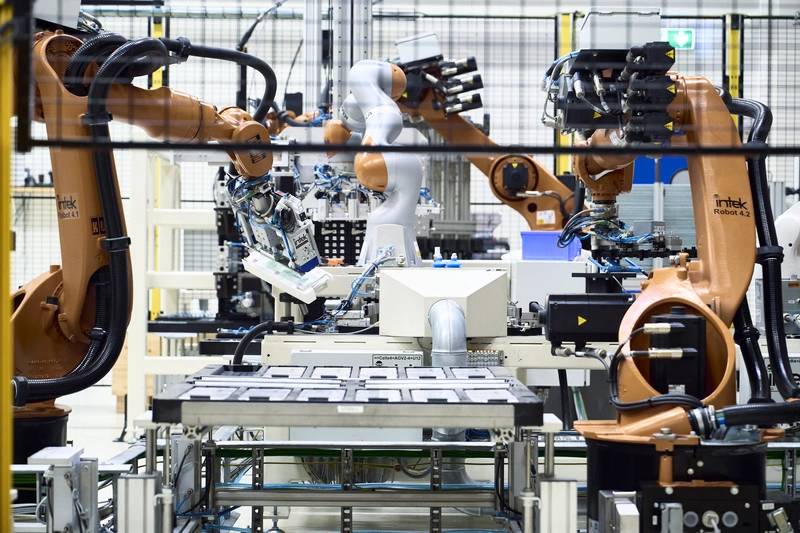 Automated assembly of BlueVault Energy Storage modules in Siemens Energy’s factory in Norway. CREDIT: Siemens EnergySystem Integration with Vision
Automated assembly of BlueVault Energy Storage modules in Siemens Energy’s factory in Norway. CREDIT: Siemens EnergySystem Integration with Vision
“Siemens Energy thinks of vessel electrification as a total system propulsion approach,” said Schwarz, adding quickly, “We collaborate with ship owners and naval architects to help design full electric, hybrid, or diesel-electric systems for their specific requirements.” From power generation to energy storage to fuel alternatives, Siemens Energy unites a range of technologies into interconnected solutions to produce high efficiency, lower emissions, and long-term reliability. A Texas Department of Transportation (TxDOT) ferry project is an excellent example, and Siemens Energy is on board.
Schwarz talked about how early involvement helped Siemens Energy create a hybrid design that would be safe, reduce emissions, and meet the budget. By creating a hybrid design that incorporates advanced energy storage and recharging capabilities, Siemens Energy played a pivotal role in helping TxDOT achieve its goals of improving fuel efficiency and reducing the environmental impacts of the next generation of ferry vessels. “The ferry recharges at night and stores energy during operation, so it has a lower carbon footprint.” The outcome was a high-tech ship pointing towards the future of passenger ferries and showing how seamless technology integration can lead to safer, more efficient, and environmentally friendly maritime transportation.
The company’s BlueDrive PlusC system, for example, illustrates Siemens Energy’s technical sophistication. This DC power and propulsion system is more fuel efficient, has fewer emissions, and is more redundant as it allows vessels to operate with variable speed generators. It easily interoperates with Siemens Energy’s BlueVault battery energy storage solution, leveraging proven lithium-ion batteries to deliver secure, safe, and long-lasting energy storage. “Green ferry infrastructure is the lifeblood of a lot of these things,” Schwarz said. “By having BlueVault, operators can cut engine run time emissions and ensure stable power supply, even when the demand is high. We’re trying to build a system that’s both efficient and sustainable. Operators can extend battery life with the modular system, preparing their boats for technological changes.”
Hybrids: From Zero-Emission Ferries to Zero-Emission Pods
All-electric ferries are the ultimate emissions reduction goal, but Schwarz also pointed out that hybrid systems are sometimes the best bet for today’s operator. “We’re seeing hybrid electric boats with storage because they’re an efficient, cost-effective route to decarbonization. Combining the battery with a conventional diesel engine can make these systems efficient, save fuel, and reduce emissions by up to 95% during certain times of operation, including docking and idling.” Siemens Energy even adds hydrogen fuel cells to its hybrid systems for operators looking for zero-emission solutions. Schwarz emphasized the power of these fuel cells in tandem with batteries for marine vessels operating in areas without sufficient charging infrastructure.
The maritime industry wants zero emissions, but hybrid systems are the most achievable, rapid route for many operators. “The most popular systems are hybrid electric systems with storage because they are the lowest-cost solution to deliver performance and sustainability," he said. Battery-powered, alternative-to-diesel power is fed into these systems for docking, idle time, and other lag times.
Schwarz emphasized automation and energy management to optimize processes and be sustainable. Siemens Energy’s power management solutions manage energy delivery, monitoring, and balancing the grid so generators only start when needed and batteries kick in when necessary. “The automation system responds on its own to the vessel’s energy demands, and then the captain can worry about navigating and staying safe while the system takes care of the work in the background,” Schwarz explained. “The automation system responds on its own to the vessel’s energy demands, and then the captain can worry about navigating and staying safe while the system takes care of the work in the background,” – Ed Schwarz, the head of the New Marine Unit Sales for the U.S. and Canada at Siemens Energy. Image courtesy Siemens Energy
“The automation system responds on its own to the vessel’s energy demands, and then the captain can worry about navigating and staying safe while the system takes care of the work in the background,” – Ed Schwarz, the head of the New Marine Unit Sales for the U.S. and Canada at Siemens Energy. Image courtesy Siemens Energy
Domestic Ferries: Charting the Path Forward
As the marine sector shifts to decarbonization, Siemens Energy leads the charge. The company is deploying BlueDrive PlusC, BlueVault, and hydrogen fuel cells to give ferry operators the tools they need to stay abreast of changing regulations, meet sustainability targets, and do all of that safely. All that said, “There is no single ‘one size fits all’ approach to decarbonizing ferries,” Schwarz insists, adding, “We as a systems integrator try to customize products to each operator’s needs and potential. Hybrid systems, all-electric vessels, or other fuels, we’re making the maritime industry more sustainable.”
The green advantages of electrified ferries go beyond reductions in global greenhouse gases. Besides this, local levels of nitrogen oxides (NOx), sulfur oxides (SOx), and particulate matter (common in large port cities) can also be radically lowered. Schwarz cited a US ferry electrification project to illustrate how large-scale use of such technologies could clean the air in port cities.
As passengers’ ferries come under pressure from local, state, and federal authorities to decarbonize, the shipyard is in for a significant change. Schwarz underscored Siemens’ holistic electrification strategy. “We think about systems integration as the full propulsion system,” he said. “Be it power generation, energy storage, propulsion, or automation – we build solutions tailored to the specific requirements of every ship.” By consulting with owners and naval architects, a system that’s not only cost-effective, also but future-proof can be achieved.
For example, the recent TxDOT project highlights the Siemens Energy strategy. In this project, the company participated at the very beginning of the design to include hybrid propulsion with emission-reduction and safety and regulatory compliance. "This ferry recharges its batteries at night and operates with generators and battery power during the day, minimizing the use of fossil fuels," Schwarz said. “It’s a model of what you can do in the industry today."
The Science Behind the System
At the heart of Siemens Energy’s solutions is the BlueDrive PlusC system, an energy-efficient, modular DC power and propulsion platform. Unlike standard alternating current (AC), the BlueDrive PlusC is compatible with variable-speed generators that reduce fuel use by delivering energy in line with the vessel’s needs. Not only does the system minimize emissions, but it also adds redundancy and safety by enabling interconnected operations in high-risk conditions.
The BlueDrive PlusC system is further supported by Siemens Energy’s BlueVault batteries, which feature high-tech lithium-ion cells. They’re built for safety and reliability, with state-of-the-art cooling and thermal runaway protection. Schwarz spoke to the necessity of these innovations, pointing out that “energy storage is now a major piece of decarbonization and allows ferries to run on electricity for months at a time.” With the modular architecture of BlueVault, operators can increase the capacity of the batteries over time so they can comply with new regulations and respond to changing energy requirements.
Schwarz also mentioned the increasing potential of hydrogen fuel cells in addition to batteries. Siemens Energy has already used hydrogen in a number of projects and provides ferry operators with a ready-to-scale solution for long-term decarbonization. However, the firm is technology-neutral and custom designs every system to fit the ship and its specific use case. "What we do is find what works best for the owner, be it energy storage or hydrogen or some combination," Schwarz said.
Automation, Energy Management – and Safety, too
Power management built into siemens Energy’s BlueDrive PlusC constantly analyzes and optimizes energy use. This makes generators only work when they need to, and the energy stored is used effectively to meet demand. Schwarz called this “energy management at work,” it operates quietly in the background, decreasing emissions and increasing performance without human interaction. Safety is also integral to automation. Since Siemens Energy’s systems ensure consistent power, blackouts can be avoided – an essential benefit for passenger ferries where reliability is crucial. Schwarz stressed this double-edged sword of automation: “You know, you want to keep the ship safe and efficient and do as little harm as possible to the environment.”
But environmental savings do not stop at lowering greenhouse gases. Schwarz noted that ferries typically operate in residential or busy coastal areas where local nitrogen oxides (NOx) and sulfur oxides (SOx) emissions are also significant sources of air pollution. “If we reduce fuel use, we’re not only reducing emissions globally, but we’re also doing something tangible for communities where these ferries travel,” he said. US ferry operators are already proving the value of this model, reducing greenhouse gases and other local pollutants while transitioning to hybrid and all-electric fleets – which is precedent for North American ferry fleets.
According to Schwarz, what makes Siemens Energy’s solutions stand out is that they are flexible. Schwarz said that many passenger ferries have been built for decades, so future technological and regulatory changes should be considered. “With an electric distribution backbone, they can add more batteries, switch to new fuels, or become 100% emission-free by the time infrastructure matures.” For ferry companies, this innovative route is the direct path to sustainability. In other words, whether the solution involves hybrid systems, automation, or next-generation energy storage, Siemens Energy has the resources and know-how to ‘future-proof’ today’s ferries for tomorrow’s challenges.
By marrying technical know-how with environmental savvy, the firm is enabling ferry operators to make green fleet changes easy. Summing up nicely, Schwarz advises, “Decarbonizing ferries is not just about cutting emissions, but about building a greener, more resilient future for the maritime sector. With Siemens Energy onboard, that future is already here.”






